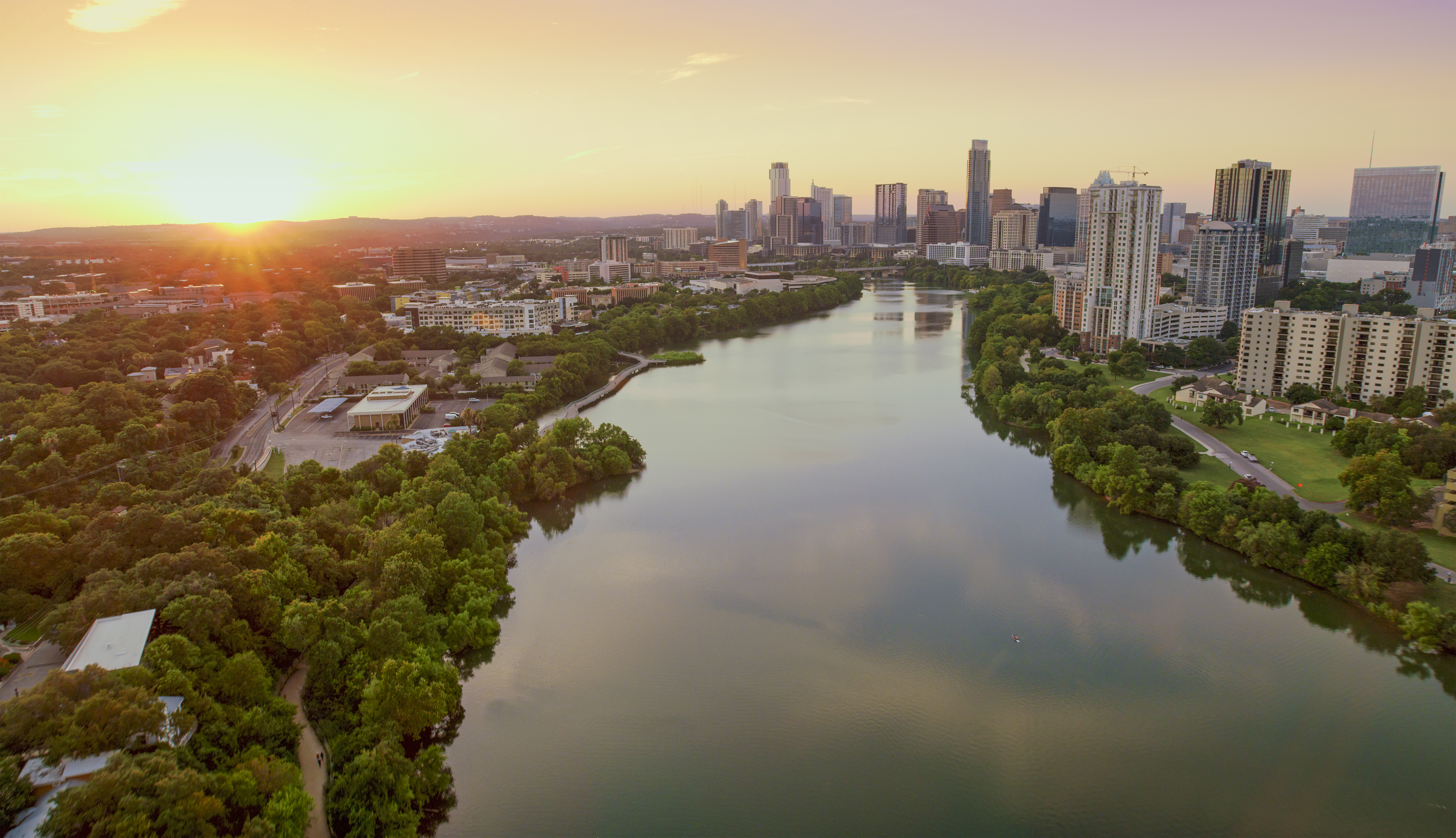

The U.S. Census Bureau's latest data reveals that Austin fell back into 11th place among America's largest cities.
One year after breaking into the list of the top-ten largest American cities, Austin has fallen back into the 11th position, according to new estimates released Thursday by the United States Census Bureau.
Between July 2022 and July 2023, Austin saw a net gain of 4,464 new residents, growing to a new total population of 979,882 people. Leapfrogging over the Texas capital to take the 10th position was Jacksonville, Fla., which is now home to 985,843 people.
| The 15 Most Populous U.S. Cities on July 1, 2023 | ||
| Rank | Area Name | 2023 Total Population |
| 1 | New York, NY | 8,258,035 |
| 2 | Los Angeles, CA | 3,820,914 |
| 3 | Chicago, IL | 2,664,452 |
| 4 | Houston, TX | 2,314,157 |
| 5 | Phoenix, AZ | 1,650,070 |
| 6 | Philadelphia, PA | 1,550,542 |
| 7 | San Antonio, TX | 1,495,295 |
| 8 | San Diego, CA | 1,388,320 |
| 9 | Dallas, TX | 1,302,868 |
| 10 | Jacksonville, FL | 985,843 |
| 11 | Austin, TX | 979,882 |
| 12 | Fort Worth, TX | 978,468 |
| 13 | San Jose, CA | 969,655 |
| 14 | Columbus, OH | 913,175 |
| 15 | Charlotte, NC | 911,311 |
Austin’s growth rate during that period – 0.42 percent – was just shy of the national growth rate of 0.5 percent. However, it was in line with population growth trends among large cities since the pandemic. In that period, four out of five cities with populations of more than 500,000 saw annual population increases of less than 1 percent.
Austin’s cooling pace of growth was mirrored in surrounding suburban cities. While still in the top-10 fastest growing cities, Georgetown’s rate of population expansion dropped more than a quarter from 14.4 percent to 10.6 percent. Despite that slowdown, Georgetown still ranked 8th among cities with the largest numeric increases, adding more than 9,000 people for a new total of 96,312 residents. Additionally, Census Bureau estimates of county and metro populations released in March also showed further evidence of slower growth across the Central Texas region and negative net migration into Travis County.
“For decades, the red-hot regional economy coupled with a relatively lower cost of living yielded substantial population growth in Central Texas,” said City Demographer Lila Valencia. “However, with volatility rattling the tech sector, housing costs rising post-pandemic, and more opportunities for remote work, it’s not surprising to see population growth slowing and Austin slipping back into position as the 11th largest city.”
While the decelerating pace of growth cost Austin bragging rights as the 10th largest city, there is a silver lining. The latest Census data shows that Travis, Williamson, and Hays counties added more than 40,000 new housing units between them. This increase in supply coupled with less intense demand pressures could be related to the recent stabilization in median home prices and rents in the Austin area.
The newly released Census data is crucial in determining how the federal government proportionately distributes billions of dollars in grants and program funding for social services, community development, and the construction of schools, roads, and hospitals.
Census data also play a central role in redrawing boundaries for representative districts for the U.S. Congress, Texas Legislature, and Austin City Council districts.
For more information visit AustinTexas.gov/Demographics.
